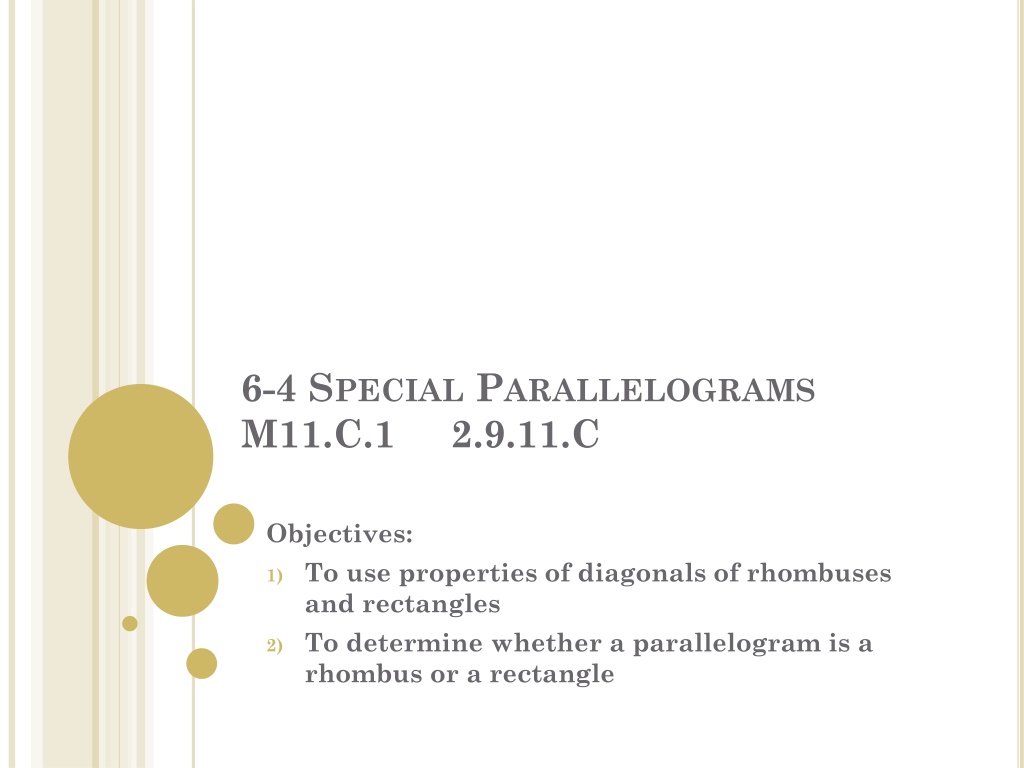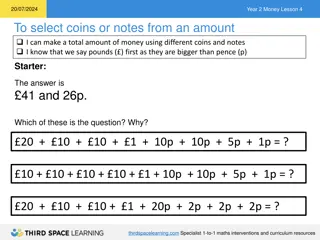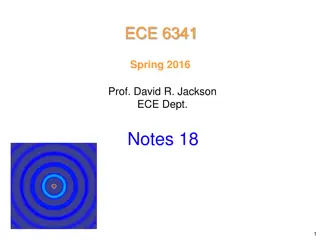
Special Parallelograms: Properties and Examples
Learn about the properties and characteristics of rhombuses and rectangles, and how to determine if a parallelogram is a rhombus or a rectangle. Explore the theorems related to diagonals, angle measures, and special parallelograms through examples and exercises. Get insights on recognizing special parallelograms with congruent or perpendicular diagonals. Homework practice included!
Download Presentation

Please find below an Image/Link to download the presentation.
The content on the website is provided AS IS for your information and personal use only. It may not be sold, licensed, or shared on other websites without obtaining consent from the author. If you encounter any issues during the download, it is possible that the publisher has removed the file from their server.
You are allowed to download the files provided on this website for personal or commercial use, subject to the condition that they are used lawfully. All files are the property of their respective owners.
The content on the website is provided AS IS for your information and personal use only. It may not be sold, licensed, or shared on other websites without obtaining consent from the author.
E N D
Presentation Transcript
6-4 SPECIAL PARALLELOGRAMS M11.C.1 2.9.11.C Objectives: 1) To use properties of diagonals of rhombuses and rectangles 2) To determine whether a parallelogram is a rhombus or a rectangle
THEOREMS Each diagonal of a rhombus bisects two angles of the rhombus The diagonals of a rhombus are perpendicular.
EXAMPLE: FINDING ANGLE MEASURES MNOP is a rhombus. Angle N is 120. Find the measure of the numbered angles
EXAMPLE: PAGE 313 Find the measure of the numbered angles.
THEOREM The diagonals of a rectangle are congruent.
EXAMPLE: FINDING DIAGONAL LENGTH Rectangle ABCD BD = 2y + 4 AC = 6y - 5
THEOREMS If one diagonal of a parallelogram bisects two angles of the parallelogram, then the parallelogram is a rhombus. If the diagonals of a parallelogram are perpendicular, then the parallelogram is a rhombus. If the diagonals of a parallelogram are congruent, then the parallelogram is a rectangle.
RECOGNIZING SPECIAL PARALLELOGRAMS Determine whether the quadrilateral can be a parallelogram. If not, write impossible. The quadrilateral has congruent diagonals and one angle of 60 degrees. The quadrilateral has perpendicular diagonals and four right angles. 1. 2. A diagonal of a parallelogram bisects two angles of the parallelogram. Is it possible for the parallelogram to have sides of lengths 5, 6, 5, and 6? Explain. 3.
Homework Page 315 #1-21






















